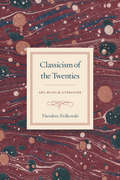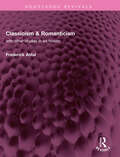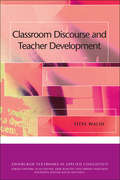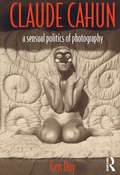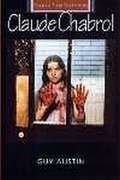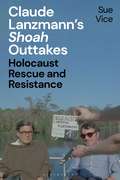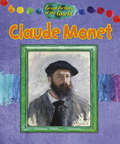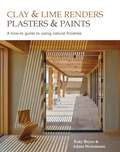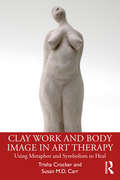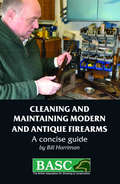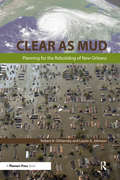- Table View
- List View
Classicism of the Twenties: Art, Music, and Literature
by Theodore ZiolkowskiThe triumph of avant-gardes in the 1920s tends to dominate our discussions of the music, art, and literature of the period. But the broader current of modernism encompassed many movements, and one of the most distinct and influential was a turn to classicism. In Classicism of the Twenties, Theodore Ziolkowski offers a compelling account of that movement. Giving equal attention to music, art, and literature, and focusing in particular on the works of Stravinsky, Picasso, and T. S. Eliot, he shows how the turn to classicism manifested itself. In reaction both to the excesses of neoromanticism and early modernism and to the horrors of World War I—and with respectful detachment—artists, writers, and composers adapted themes and forms from the past and tried to imbue their own works with the values of simplicity and order that epitomized earlier classicisms. By identifying elements common to all three arts, and carefully situating classicism within the broader sweep of modernist movements, Ziolkowski presents a refreshingly original view of the cultural life of the 1920s.
Classicism of the Twenties: Art, Music, and Literature
by Theodore ZiolkowskiThe triumph of avant-gardes in the 1920s tends to dominate our discussions of the music, art, and literature of the period. But the broader current of modernism encompassed many movements, and one of the most distinct and influential was a turn to classicism. In Classicism of the Twenties, Theodore Ziolkowski offers a compelling account of that movement. Giving equal attention to music, art, and literature, and focusing in particular on the works of Stravinsky, Picasso, and T. S. Eliot, he shows how the turn to classicism manifested itself. In reaction both to the excesses of neoromanticism and early modernism and to the horrors of World War I—and with respectful detachment—artists, writers, and composers adapted themes and forms from the past and tried to imbue their own works with the values of simplicity and order that epitomized earlier classicisms. By identifying elements common to all three arts, and carefully situating classicism within the broader sweep of modernist movements, Ziolkowski presents a refreshingly original view of the cultural life of the 1920s.
Classicism of the Twenties: Art, Music, and Literature
by Theodore ZiolkowskiThe triumph of avant-gardes in the 1920s tends to dominate our discussions of the music, art, and literature of the period. But the broader current of modernism encompassed many movements, and one of the most distinct and influential was a turn to classicism. In Classicism of the Twenties, Theodore Ziolkowski offers a compelling account of that movement. Giving equal attention to music, art, and literature, and focusing in particular on the works of Stravinsky, Picasso, and T. S. Eliot, he shows how the turn to classicism manifested itself. In reaction both to the excesses of neoromanticism and early modernism and to the horrors of World War I—and with respectful detachment—artists, writers, and composers adapted themes and forms from the past and tried to imbue their own works with the values of simplicity and order that epitomized earlier classicisms. By identifying elements common to all three arts, and carefully situating classicism within the broader sweep of modernist movements, Ziolkowski presents a refreshingly original view of the cultural life of the 1920s.
Classicism of the Twenties: Art, Music, and Literature
by Theodore ZiolkowskiThe triumph of avant-gardes in the 1920s tends to dominate our discussions of the music, art, and literature of the period. But the broader current of modernism encompassed many movements, and one of the most distinct and influential was a turn to classicism. In Classicism of the Twenties, Theodore Ziolkowski offers a compelling account of that movement. Giving equal attention to music, art, and literature, and focusing in particular on the works of Stravinsky, Picasso, and T. S. Eliot, he shows how the turn to classicism manifested itself. In reaction both to the excesses of neoromanticism and early modernism and to the horrors of World War I—and with respectful detachment—artists, writers, and composers adapted themes and forms from the past and tried to imbue their own works with the values of simplicity and order that epitomized earlier classicisms. By identifying elements common to all three arts, and carefully situating classicism within the broader sweep of modernist movements, Ziolkowski presents a refreshingly original view of the cultural life of the 1920s.
Classicism & Romanticism: with other studies in art history (Routledge Revivals)
by Frederick AntalFirst published in 1966, Classicism and Romanticism is a collection of important articles originally published in the author's famous book, Florentine Painting and its Social Background. Dr. Antal, a Hungarian by birth, was a man of the wildest culture. He studied art history in the universities of Budapest, Berlin, Paris and Vienna; thereafter, he travelled extensively in Italy, where he devoted himself to pioneering research in the history of mannerist painting. His exceptional sensitivity to the visual arts is apparent in such brilliant stylistic analyses as the essays on Netherlandish mannerism and on Girolamo da Carpi. He is known especially, however, for his application to art history of the sociological method. By returning art to its place in the general history of ideas and relating it to its economic, social, and political environment, he sought to give to the history of art a wider significance ad deeper meaning. This book will be of interest to students of art, history, literature, art history and European studies.
Classicism & Romanticism: with other studies in art history (Routledge Revivals)
by Frederick AntalFirst published in 1966, Classicism and Romanticism is a collection of important articles originally published in the author's famous book, Florentine Painting and its Social Background. Dr. Antal, a Hungarian by birth, was a man of the wildest culture. He studied art history in the universities of Budapest, Berlin, Paris and Vienna; thereafter, he travelled extensively in Italy, where he devoted himself to pioneering research in the history of mannerist painting. His exceptional sensitivity to the visual arts is apparent in such brilliant stylistic analyses as the essays on Netherlandish mannerism and on Girolamo da Carpi. He is known especially, however, for his application to art history of the sociological method. By returning art to its place in the general history of ideas and relating it to its economic, social, and political environment, he sought to give to the history of art a wider significance ad deeper meaning. This book will be of interest to students of art, history, literature, art history and European studies.
Classroom Discourse and Teacher Development (Edinburgh Textbooks in Applied Linguistics)
by Steve WalshThis textbook shows how classroom discourse can be applied to develop and improve teaching. Combining examples from everyday practice with theoretical approaches, it provides a comprehensive account of current perspectives on classroom discourse.
Claude Cahun: A Sensual Politics of Photography
by Gen DoyThis is the first single-authored book in English on the photographer Claude Cahun, whose work was rediscovered in the 1980s. Doy moves beyond standard postmodern approaches, instead repositioning the artist, born Lucy Schwob, in the context of the turbulent times in which she lived and seeing the photographs as part of Cahun's wider life as an artist and writer, a woman and lesbian and as a political activist in the early twentieth century. Doy rethinks Cahun's approach to dress and masquerade, looking at the images in light of the situation of women at the time and within the prevailing 'beauty' culture. Addressing Cahun's ambivalent relationship with Symbolism and later relationship with Surrealism, this highly readable book also looks at Cahun's unusual approach to the domestic object.
Claude Cahun: A Sensual Politics of Photography
by Gen DoyThis is the first single-authored book in English on the photographer Claude Cahun, whose work was rediscovered in the 1980s. Doy moves beyond standard postmodern approaches, instead repositioning the artist, born Lucy Schwob, in the context of the turbulent times in which she lived and seeing the photographs as part of Cahun's wider life as an artist and writer, a woman and lesbian and as a political activist in the early twentieth century. Doy rethinks Cahun's approach to dress and masquerade, looking at the images in light of the situation of women at the time and within the prevailing 'beauty' culture. Addressing Cahun's ambivalent relationship with Symbolism and later relationship with Surrealism, this highly readable book also looks at Cahun's unusual approach to the domestic object.
Claude Cahuns Poesie des Objekts: Über das infizierende Nachleben von Fotografien (Image #179)
by Kat Lawinia GorskaIhre fotografischen Selbstportraits aus den 1930er Jahren machten Claude Cahun zu einer queeren Ikone. Nur den wenigsten dürfte jedoch bekannt sein, dass sie auch eine leidenschaftliche Objektkünstlerin war, die ihre Praxis zudem in Schriften reflektierte. Ihre Objekte haben in Form von Fotografien überdauert, doch was ist eigentlich gemeint, wenn hier von Objekten gesprochen wird? Objekte, Fotografien der Objekte oder noch etwas anderes? Kat Lawinia Gorska fasst die unterschätzten Aspekte Claude Cahuns künstlerischer und schriftstellerischer Tätigkeit aus einer medienphilosophischen Perspektive ins Auge und wirft auf diese Weise ein völlig neues Licht auf die Künstlerin.
Claude Chabrol (French Film Directors Series)
by Guy AustinThis is the first book-length study in English on Chabrol since 1970. Chabrol has always been a neglected figure in the French New Wave but has recently been declared 'possibly the greatest living film director in France'.. Coincides with the recent renewal of interest in Chabrol, which has seen his back catalogue released in the UK on video.. Celebration of Chabrol's fiftieth film recently, Rien ne va plus prompted many festivals and retrospectives. Publication coincides with Chabrol's new film which is discussed in this study.. Writtten by one of the liveliest critics in French cinema - author of Contemporary French Cinema.
Claude Chabrol (French Film Directors Series)
by Guy AustinThis is the first book-length study in English on Chabrol since 1970. Chabrol has always been a neglected figure in the French New Wave but has recently been declared 'possibly the greatest living film director in France'.. Coincides with the recent renewal of interest in Chabrol, which has seen his back catalogue released in the UK on video.. Celebration of Chabrol's fiftieth film recently, Rien ne va plus prompted many festivals and retrospectives. Publication coincides with Chabrol's new film which is discussed in this study.. Writtten by one of the liveliest critics in French cinema - author of Contemporary French Cinema.
Claude Lanzmann’s 'Shoah' Outtakes: Holocaust Rescue and Resistance
by Sue ViceAs we approach the end of the 'era of the witness', given the passing on of the generation of Holocaust survivors, Claude Lanzmann's archive of 220 hours of footage excluded from his ground-breaking documentary Shoah (1985) offers a remarkable opportunity to encounter previously unseen interviews with survivors and other witnesses, recorded in the late 1970s. Although the archive is all available freely to view online and includes extra footage of those who appear in Shoah, this book focuses on the interviews from which no extracts appear in the finished film or in any subsequent release. The material analysed features interviews with such significant figures as the former partisan Abba Kovner, wartime activist Hansi Brand, Kovno Ghetto leader Leib Garfunkel, rescuer Tadeusz Pankiewicz and members of Roosevelt's War Refugee Board, and focuses throughout on the efforts at rescue and resistance by those within and outside occupied Europe. Sue Vice contends that watching and analysing this wholly excluded footage gives us new insights into the making of Shoah through what was left out. Moreover, she reveals that the near-impossibility of rescue and often suicidal implications of resistance emerge through these excluded interviews as inextricable from the process of genocide. She concludes by arguing that the outtakes show the potential for new filmic forms envisaged on Lanzmann's part in order to represent the crucial topics of attempted Holocaust rescue and resistance.
Claude Lanzmann’s 'Shoah' Outtakes: Holocaust Rescue and Resistance
by Sue ViceAs we approach the end of the 'era of the witness', given the passing on of the generation of Holocaust survivors, Claude Lanzmann's archive of 220 hours of footage excluded from his ground-breaking documentary Shoah (1985) offers a remarkable opportunity to encounter previously unseen interviews with survivors and other witnesses, recorded in the late 1970s. Although the archive is all available freely to view online and includes extra footage of those who appear in Shoah, this book focuses on the interviews from which no extracts appear in the finished film or in any subsequent release. The material analysed features interviews with such significant figures as the former partisan Abba Kovner, wartime activist Hansi Brand, Kovno Ghetto leader Leib Garfunkel, rescuer Tadeusz Pankiewicz and members of Roosevelt's War Refugee Board, and focuses throughout on the efforts at rescue and resistance by those within and outside occupied Europe. Sue Vice contends that watching and analysing this wholly excluded footage gives us new insights into the making of Shoah through what was left out. Moreover, she reveals that the near-impossibility of rescue and often suicidal implications of resistance emerge through these excluded interviews as inextricable from the process of genocide. She concludes by arguing that the outtakes show the potential for new filmic forms envisaged on Lanzmann's part in order to represent the crucial topics of attempted Holocaust rescue and resistance.
Claude Monet (Great Artists)
by Ann SumnerClaude Monet's tranquil water-lily paintings and rural landscape scenes are among some of the most treasured artworks of the 19th and 20th centuries. Hailed as the 'Prince of Impressionism' for his pioneering role in the French artistic movement, Monet is widely recognised for his free brushstroke and experimentation with colour and natural light. In this beautifully illustrated book, Ann Sumner explores the life of this prodigious painter and the subjects that obsessed him: the cliffs of the Normandy coastline, the palazzos of Venice, the railway stations of Paris, the great edifice of Rouen Cathedral, and his beloved garden at Giverny. Showcasing a selection of his best-loved and lesser-known paintings alongside fascinating biographic detail, this guide serves as a perfect introduction to Monet and the evolution of his iconic style. ABOUT THE SERIES: The Great Artists series by Arcturus Publishing introduces some of the most significant artists of the past 150 years, looking at their lives, techniques and inspirations, as well as presenting a selection of their best work.
Claude Monet (Great Artists of the World #2)
by Alix WoodLearn all about the life of Claude Monet, the founder of Impressionism? Discover who inspired him, what his most famous paintings are and how he invented a new style of painting.Great Artists introduces young readers to some of the world's great artists. The books feature easy-to-read text and some of the most famous examples of each artist's work, as well as photographs of places and people of importance.
Clay: A Human History
by Jennifer Lucy Allan'Clay contains infinite possibilities in its transmutations, evidenced on the shelves of our homes, our galleries and museums. Every time we make something with clay, we engage with the timelines that are in the material itself, whether it was dug from a clifftop, riverbed or pit. In firing what we make, we bestow the material with function, meaning, or feeling, and anchor its form in a human present... Objects made from clay contain marks of our existence that collectively tell the story of human history more completely than any other material. There is a reason there are so many pots in museums: because fired clay is one of the most effective keepers of stories we have.'This book is a love letter to clay, the material that is at the beginning, middle and end of all of our lives; that contains within it the eternal, the elemental, and the everyday.People have been taking handfuls of earth and forming them into their own image since human history began. Human forms are found everywhere there was a ceramic tradition, and there is a ceramic tradition everywhere there was human activity. The clay these figures are made from was formed in deep geological time. It is the material that God, cast as the potter, uses to form Adam in Genesis. Tomb paintings in Egypt show the god Khnum at a potter's wheel, throwing a human. Humans first recorded our own history on clay tablets, the shape of the characters influenced by the clay itself. The first love poem was inscribed in a clay tablet, from a Sumerian bride to her king more than 4000 years ago. Born out of a desire to know and understand the mysteries of this material, the spiritual and practical applications of clay in both its micro and macro histories, Clay: A Human History is a book of wonder and insight, a hybrid of archaeology, history and lived experience as an amateur potter.
Clay and lime renders, plasters and paints: A how-to guide to using natural finishes (Sustainable Building #9)
by Adam Weismann Katy BryceAn in-depth guide with step-by-step instructions on how to select, mix and apply lime- and clay- based plasters, renders, paints and washes.With the increasing awareness of eco-building techniques alongside the desire to make our homes healthier, the historical benefits of using natural renders and paints are being rediscovered. Clay and Lime Renders, Plasters and Paints is a detailed guide to the selection, mixing and application of lime- and clay-based plasters, renders, paints and washes.It provides step-by-step instructions for applying lime- and clay-based plasters, renders and paints, and information on the benefits of natural finishes for personal health, the environment, and for buildings. The book draws on traditional methods & materials for using lime & clay finishes on new and historic buildings, and also includes a comprehensive and up-to-date online resource guide to suppliers, practitioners and courses. Easy to follow DIY projects guide the reader through all aspects of using these natural finishes, with beautiful photographs of techniques and examples from the UK and abroad.
Clay Work and Body Image in Art Therapy: Using Metaphor and Symbolism to Heal
by Trisha Crocker Susan M.D. CarrClay Work and Body Image in Art Therapy provides an important addition to resources available in the field of clay work and art therapy, highlighting the unique sensory aspects of the medium and its ability to provide a therapeutic resource for women who experience body image issues. Chapters offer a comprehensive distillation of current knowledge in the field of body image, clay work, neuroscience, and art therapy, building a theoretical framework around personal narratives. Case studies examine the benefits of exploring body image through clay work within art therapy practice, providing a positive and contained way to find personal acceptance and featuring photographs of clay body image sculptures created by research participants that highlight their individual stories and experiences. As well as offering both clinical and practical implications, the text provides a full protocol for the research and evaluation methods carried out, enabling further replication of the intervention and research methods by other therapists. This book highlights clay work as a significant resource for art therapists, arts in health practitioners, and counsellors, providing an emotive yet contained approach to the development of personal body image acceptance and self-compassion.
Clay Work and Body Image in Art Therapy: Using Metaphor and Symbolism to Heal
by Trisha Crocker Susan M.D. CarrClay Work and Body Image in Art Therapy provides an important addition to resources available in the field of clay work and art therapy, highlighting the unique sensory aspects of the medium and its ability to provide a therapeutic resource for women who experience body image issues. Chapters offer a comprehensive distillation of current knowledge in the field of body image, clay work, neuroscience, and art therapy, building a theoretical framework around personal narratives. Case studies examine the benefits of exploring body image through clay work within art therapy practice, providing a positive and contained way to find personal acceptance and featuring photographs of clay body image sculptures created by research participants that highlight their individual stories and experiences. As well as offering both clinical and practical implications, the text provides a full protocol for the research and evaluation methods carried out, enabling further replication of the intervention and research methods by other therapists. This book highlights clay work as a significant resource for art therapists, arts in health practitioners, and counsellors, providing an emotive yet contained approach to the development of personal body image acceptance and self-compassion.
Clayworks in Art Therapy: Plying the Sacred Circle
by David HenleyClay is universally recognized as a medium of creative expression, and it also has great potential for therapeutic application. These two properties of clay are celebrated together in a book that explores the history, theory and techniques of claywork in eliciting therapeutic outcomes. Vignettes and case material explain and expand the text, which interweaves an appreciation of clay in art with many practical suggestions for its use in therapy. By according equal status to aesthetic outcomes and artistic integrity, the author offers a new and holistic approach to claywork. Practitioners and educators in the fields of therapy and art will find his book to be an essential source of information and ideas.
Clayworks in Art Therapy: Plying the Sacred Circle (PDF)
by David HenleyClay is universally recognized as a medium of creative expression, and it also has great potential for therapeutic application. These two properties of clay are celebrated together in a book that explores the history, theory and techniques of claywork in eliciting therapeutic outcomes. Vignettes and case material explain and expand the text, which interweaves an appreciation of clay in art with many practical suggestions for its use in therapy. By according equal status to aesthetic outcomes and artistic integrity, the author offers a new and holistic approach to claywork. Practitioners and educators in the fields of therapy and art will find his book to be an essential source of information and ideas.
Cleaning and Maintaining Modern and Antique Firearms: A Concise Guide (Basc Handbook Ser.)
by Bill HarrimanIn this book leading firearms expert Bill Harriman deals with all aspects of the cleaning and maintenance of the most commonly encountered types of sporting firearms. The book gives practical advice distilled from the author’s 50 years’ experience in shooting sports and gun collecting. The emphasis is on safety and value for money.Cleaning materials and other consumables are discussed in detail as are the tools and implements necessary to maintain a gun’scondition, reliability and value. The specialist techniques required for cleaning and maintaining every type of firearm are described, as are those for dealing with ancillary equipment. The book also covers how to mark and record firearms to discourage theft and to aid their recovery should they be stolen. As the author remarks in his introduction: ‘This book is not just about preserving wood and metal, it is about preserving heritage too.’
Clear as Mud: Planning for the Rebuilding of New Orleans
by Laurie Johnson Robert B. OlshanskyPlanning the rebuilding of New Orleans after Hurricanes Katrina and Rita has been among the greatest urban planning challenges of our time. Since 2005, Robert B. Olshansky and Laurie A. Johnson, urban planners who specialize in disaster planning and recovery, have been working to understand, in real time, the difficult planning decisions in this unusual situation. As both observers of and participants in the difficult process of creating the Unified New Orleans Plan, Olshansky and Johnson bring unparalleled detail and insight to this complex story. The recovery process has been slow and frustrating, in part because New Orleans was so unprepared for the physical challenges of such a disaster, but also because it lacked sufficient planning mechanisms to manage community reconstruction in a viable way. New Orleans has had to rebuild its buildings and institutions, but it has also had to create a community planning structure that is seen as both equitable and effective, while also addressing the concerns and demands of state, federal, nonprofit, and private-sector stakeholders. In documenting how this unprecedented process occurred, Olshansky and Johnson spent years on the ground in New Orleans, interviewing leaders and citizens and abetting the design and execution of the Unified New Orleans Plan. Their insights will help cities across the globe recognize the challenges of rebuilding and recovering after disaster strikes.
Clear as Mud: Planning for the Rebuilding of New Orleans
by Laurie Johnson Robert B. OlshanskyPlanning the rebuilding of New Orleans after Hurricanes Katrina and Rita has been among the greatest urban planning challenges of our time. Since 2005, Robert B. Olshansky and Laurie A. Johnson, urban planners who specialize in disaster planning and recovery, have been working to understand, in real time, the difficult planning decisions in this unusual situation. As both observers of and participants in the difficult process of creating the Unified New Orleans Plan, Olshansky and Johnson bring unparalleled detail and insight to this complex story. The recovery process has been slow and frustrating, in part because New Orleans was so unprepared for the physical challenges of such a disaster, but also because it lacked sufficient planning mechanisms to manage community reconstruction in a viable way. New Orleans has had to rebuild its buildings and institutions, but it has also had to create a community planning structure that is seen as both equitable and effective, while also addressing the concerns and demands of state, federal, nonprofit, and private-sector stakeholders. In documenting how this unprecedented process occurred, Olshansky and Johnson spent years on the ground in New Orleans, interviewing leaders and citizens and abetting the design and execution of the Unified New Orleans Plan. Their insights will help cities across the globe recognize the challenges of rebuilding and recovering after disaster strikes.
